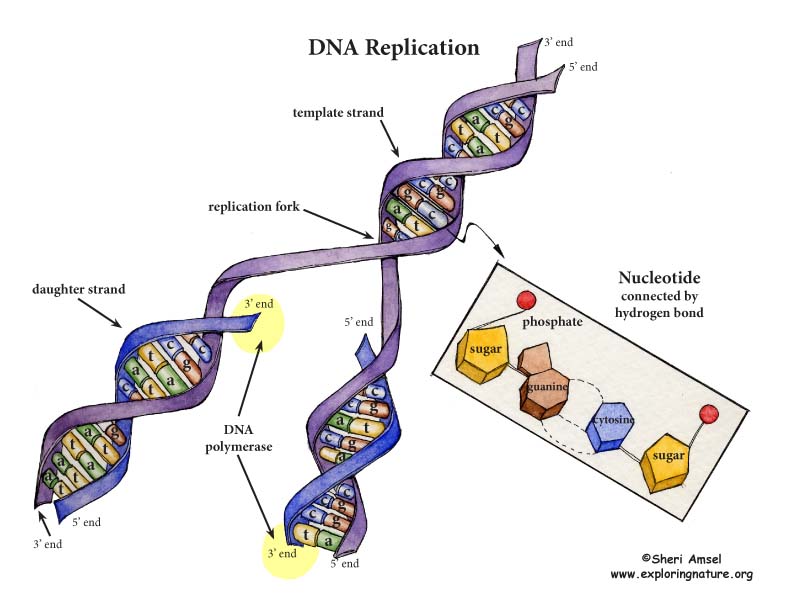

The bonds between base pairs are made to be easily broken so that the DNA spiral can unwind and unzip. This allows two processes to take place. One is replication and the other is transcription. We will look at replication here.
Replication is really just gene-copying. Organisms must be able to exactly copy and distribute all their DNA during every cell division. When DNA is ready to multiply, the double helix unwinds and unzips. A new strand will form and bond with the complementary base pairs for each side. How does this happen?
More Details for Older Students:
DNA replication is semi-conservative. This means that the parent stands are not affected by being replicated. The two strands of the helix, which run in opposite directions, separate (unwind and unzip). They then become templates for a completely new strand.
Replication is very ordered and accurate. It begins with a portion of the double helix called the Origin of replication (ORI). The strands are separated by a protein called helicase. Then a molecule of a DNA polymerase binds to each strand of the DNA. On one strand, the polymerase moves in the 3’ to 5’ direction, adding nucleotides to the 3’OH end of the growing chain using the leading strand as a template. As the polymerase moves along the strand, a double helix nearly identical to the parental helix is made. Replication is complete.
Collaborative consultation on website genetics and genomics from Dr. Stephen M. Carleton, Assistant Professor, Department of Anatomy and Cell Biology, SUNY Health Science Center at Brooklyn.

